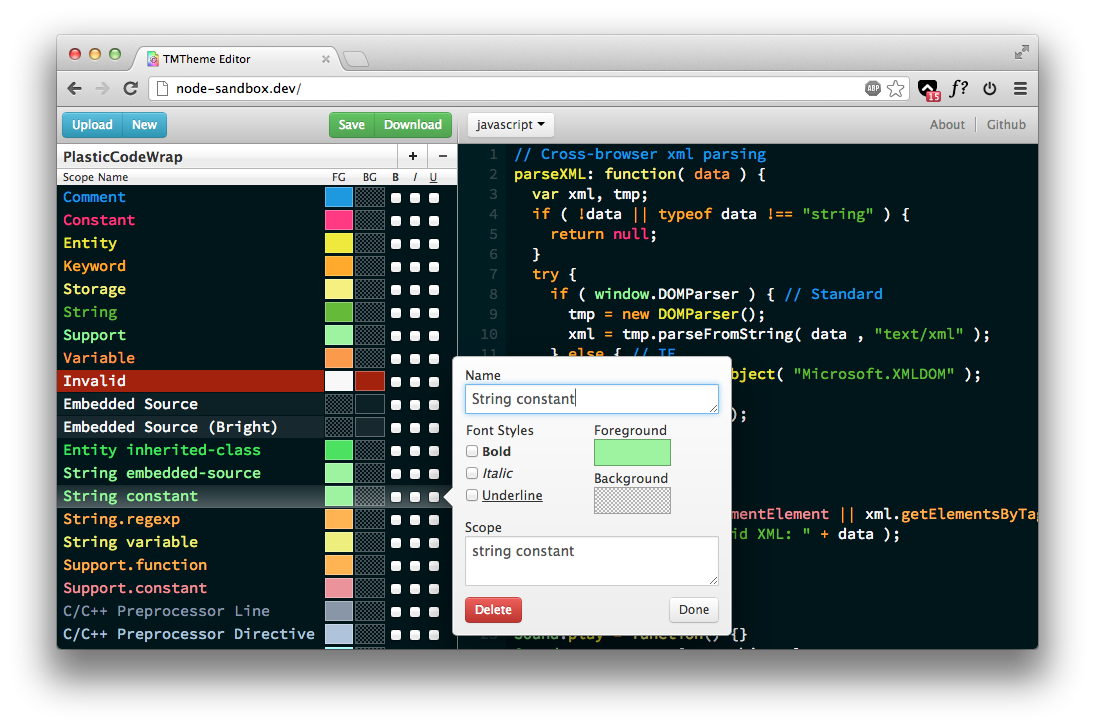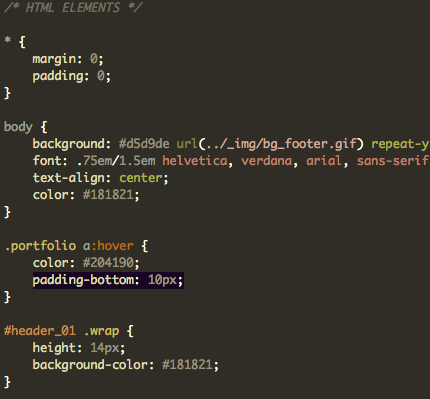

This basically re-creates textmate’s approach, but via imports rather than string construction, and I’m not sure why that would be worth it. Discover 45 Textmate designs on Dribbble.

Then set your current TextMate theme to the new theme name. This bundle saves the newly generated theme in the Avian folder under Library / Application Support which works great for the current Alpha.
#Textmate theme update

Writing themes with huge numbers of scopes is something that theme authors would do if an only if they want to change specific things. tokenColorCustomizations, I can specify what theme I want us to go for. So the top-level root scope names are the only things which theme authors need to target. The fallback system in textmate grammars / scopes works such that if a scope defines for which no highlighting rule is found, it will fall back to, then markup.list, then finally markup.
#Textmate theme code
My understanding of textmate grammars is that these problems implied above are theoretically possible but don’t actually happen often, even with widespread use across most modern code editors. I can select a theme in the View menu, but I want to customize a theme, the same way it was possible in TextMate 1, by selecting the scope and changing the. this textmate theme here: /mediaupstream/Upstream-Textmate-Themes. So you get impractically huge themes trying to target all the crap found in the wildĬodeMirror uses a mostly closed vocabulary of syntax tags (as opposed to traditional open string-based systems, which make it hard for highlighting themes to cover all the tokens produced by the various languages). This is a screenshot of the Upstream textmate theme used by Media Upstream. * This function takes as arguments an input directory with generated vscode json files and generated output files with the same names at output directory.ĬonvertThemeFromDir(inputDir: './my-vscode-themes-collection-dir/in', outDir: '.TextMate-style open ended type names mean that everybody is going to define their own ad-hoc types, and theme writers just won’t know what to target. * Convert multiple vscode themes to monaco themes. * Copy the generated JSON and use it as input for the function below. * In vscode use command: `Developer: Generate Color Theme From Current Settings` This allows you to visually differentiate between code, markup, and styles more quickly and easily. In my theme, each type of code in a document gets its own set of color rules and subtle background shading. It also makes creating custom color schemes more intuitive for web developers. monaco-converted-themes Programmatic Usage: import from 'monaco-vscode-textmate-theme-converter/lib/cjs' // cjs module /* I created a new TextMate theme to address this problem. convert a directory of vscode theme files # npx monaco-vscode-textmate-theme-converter -i. convert a single file # npx monaco-vscode-textmate-theme-converter -i. CLI Usage: npx monaco-vscode-textmate-theme-converter -i -o theme TextMate theme TextMate color scheme color scheme. Once the tokens are tmGrammar compatible, you need to convert vscode generated theme data to monaco-editor compatible api. Nicely colored and easy on the eyes theme for the TextMate text editor. Do you like the TextMate theme used in these screencasts It is custom made and based off of the theme by idlefingers.

You can use monaco-textmate to make your monaco-editor tmGrammar compatible. The problem here is that vscode uses tmGrammar tokens for colorization support while monaco uses its own code editor to generate language tokens. VSCode themes are directly not compatible with monaco-editor themes.


 0 kommentar(er)
0 kommentar(er)
